Dealing with the visible redness and irritation of rosacea can be both frustrating and emotionally taxing, primarily when over-the-counter treatments don’t provide lasting relief.
Though the exact cause remains unclear, a combination of genetics and environmental factors is believed to contribute to this chronic condition.
While rosacea is not curable, rosacea laser therapy has become a highly effective option for managing its symptoms. It offers a noninvasive rosacea laser treatment to reduce redness, visible blood vessels, and skin texture irregularities.
What is Rosacea?
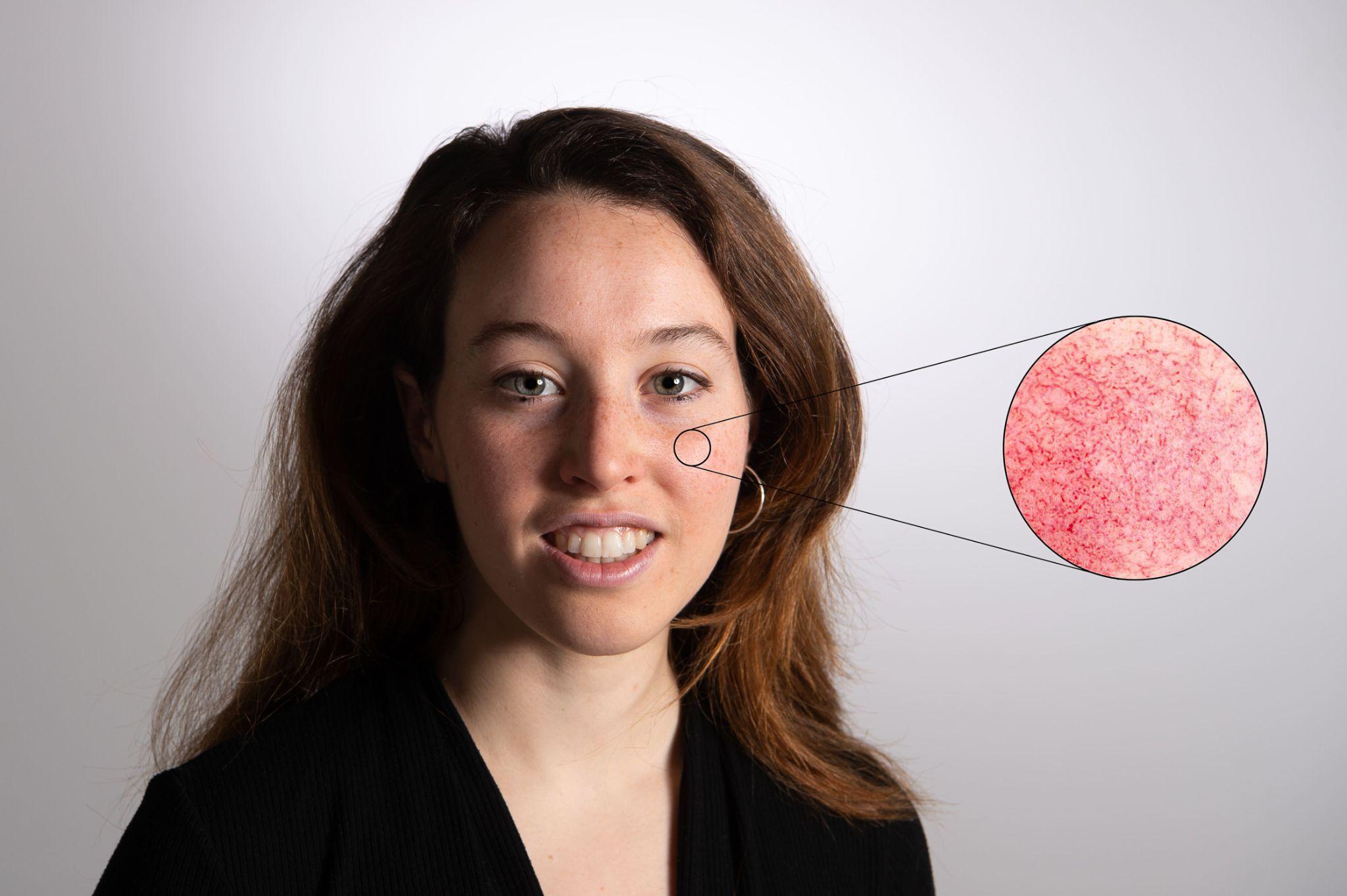
Image by Alessandro_Grandini
Rosacea is a chronic skin condition that primarily affects the face. It causes redness, visible blood vessels, and sometimes pimples. It typically affects adults, particularly those with fair skin, and is most common in people aged 30-50.
The exact cause of rosacea remains unclear, but genetics, environmental factors, and an overactive immune system may all contribute. While rosacea isn’t curable, proper treatment can manage its symptoms.
Signs of Rosacea

- Facial Redness: The most noticeable sign is persistent redness on the cheeks, nose, chin, and forehead.
- Bumps and Pimples: Small, red, pus-filled bumps can appear, resembling acne.
- Visible Blood Vessels: Tiny blood vessels on the face may become visible, particularly around the nose.
- Eye Irritation: Rosacea can also affect the eyes, causing dryness, irritation, and a gritty feeling.
- Thickened Skin: In some cases, the skin may thicken, especially around the nose, leading to a condition called rhinophyma.
These visible symptoms can be frustrating, particularly when they impact your confidence or cause discomfort. While many treatments—such as topical creams or medications—can help manage rosacea, laser therapy offers a more targeted solution for reducing redness and visible blood vessels.
Why Laser Treatment Is a Popular Option for Rosacea
Laser treatment has become one of the most effective options for treating the visible symptoms of rosacea. Unlike topical treatments focusing on symptom management, lasers target the underlying blood vessels and skin issues that cause redness and swelling.
Laser therapy offers a quick, non-surgical way to reduce these visible signs and can help achieve smoother, more even-toned skin.
Laser skin treatment for rosacea redness at Laser Forefront offers a practical, non-invasive treatment that helps to reduce visible symptoms and restore even skin tone. Whether new to rosacea treatment or seeking something more practical, Laser Forefront can provide the care you need to feel confident in your skin again.
Who is Eligible for Laser Treatment for Rosacea?

Source: yalemedicine & pierre-fabre
Laser treatment for rosacea is generally suitable for most people with moderate to severe rosacea. However, some factors may affect eligibility:
- Skin type: People with lighter skin tend to respond better to laser treatments. Those with darker skin may need a more specialized approach to avoid pigmentation changes.
- Pregnancy: If you’re pregnant, it’s best to avoid laser treatments due to the lack of research on the effects of lasers during pregnancy.
- Active flare-ups: If your rosacea is active, your dermatologist may recommend waiting until your skin is calmer before laser treatment.
A consultation with a dermatologist is crucial to determine whether laser treatment for rosacea is the best option for you.
What are the Effective Laser Treatments for Rosacea Symptoms
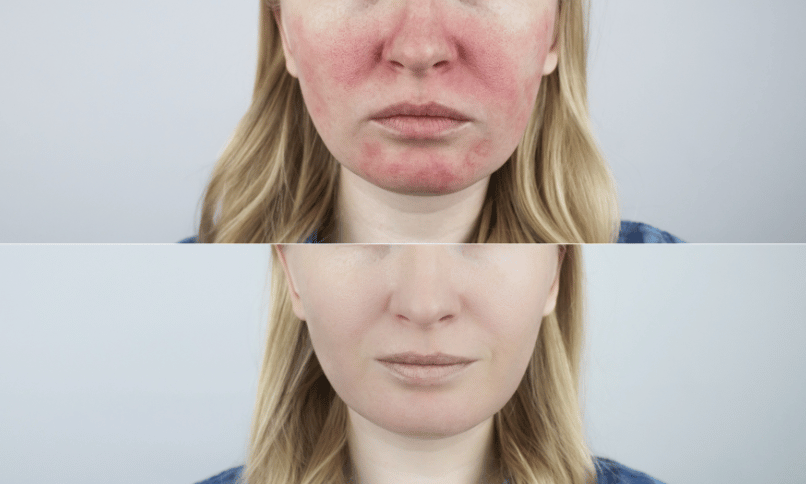
Image by N306pa>keHnsnonb3oBaTtensAnéHa
Laser Solutions for Rosacea
Rosacea Laser Therapy | Suitable for |
Pulsed Dye Laser (PDL) |
|
Intense Pulsed Light (IPL) |
|
Fractional CO2 Laser |
|
Nd:YAG Laser |
|
Erbium Laser |
|
Diode Laser |
|
Laser treatments have become one of the most effective options for treating the visible symptoms of rosacea. There are several types of lasers commonly used, each targeting specific issues associated with rosacea:
Pulsed Dye Laser (PDL)
PDL is one of the most popular and effective laser treatment for rosacea. This laser uses a concentrated beam of light that targets blood vessels beneath the skin’s surface.
When the blood vessels absorb the laser light, they heat up and destroy themselves, reducing redness and visible blood vessels. PDL is particularly effective for those with prominent redness and broken capillaries commonly associated with rosacea.
Unlike other treatments, PDL is known for its precision. It selectively targets blood vessels while leaving the surrounding skin undamaged. Most patients see noticeable improvements after just one or two sessions. PDL also has a lower risk of side effects like scarring or discoloration, making it a preferred option for many.
Benefits:
- Targets blood vessels and redness directly.
- Minimal downtime, with results often visible after a few treatments.
- Precision treatment with a low risk of scarring or pigmentation changes.
- It is often effective for small, broken blood vessels (telangiectasias).
Intense Pulsed Light (IPL) Therapy
Although intense Pulsed Light (IPL) therapy is not technically a laser, it is often used as a laser treatment for rosacea. A 2020 study of 227 people with advanced rosacea found that 540 nm IPL treatment significantly reduced facial redness and prevented symptom recurrence for up to two years.
Unlike traditional lasers that use a single wavelength of light, IPL uses a broad spectrum of light that can be customized to target blood vessels and pigmentation in the skin.
IPL therapy works by emitting light absorbed by the blood vessels and pigments in the skin, helping to break them down. The treatment also helps reduce the inflammation that often triggers rosacea flare-ups.
It is generally suitable for mild to moderate cases of rosacea and is especially effective for treating the erythematotelangiectatic subtype (the redness and visible blood vessels).
Benefits:
- Treats both redness and acne-like breakouts common in rosacea.
- Non-invasive with minimal discomfort.
- Quick treatment sessions (usually around 20 minutes).
- Works on larger areas of the face and body.
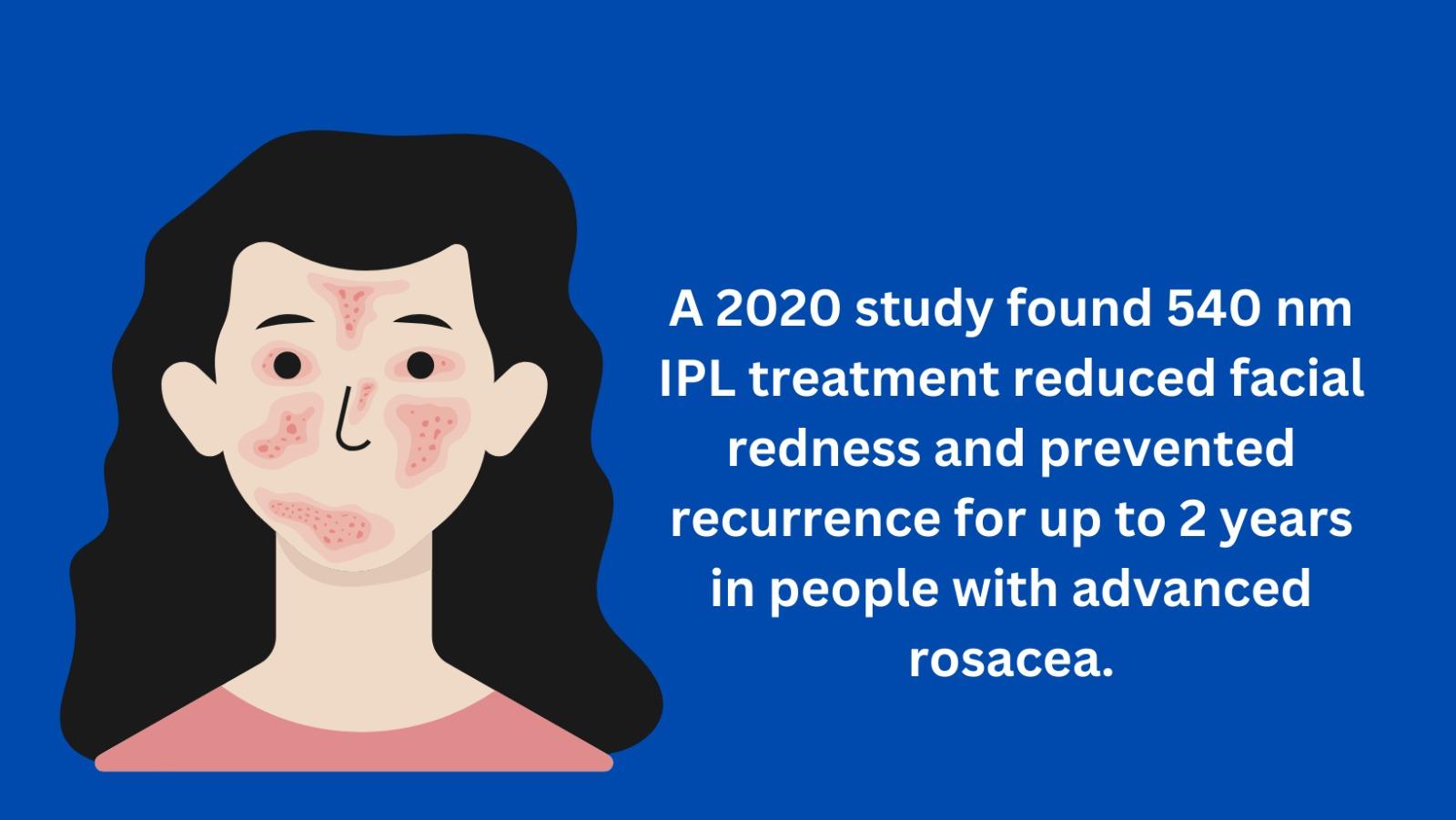
Fractional CO2 Laser
Fractional CO2 Laser treatment is a more advanced option typically reserved for individuals with more severe rosacea symptoms, especially those with scarring or significant skin texture issues. This laser is a fractionated carbon dioxide laser, meaning it removes layers of damaged skin in a controlled manner, stimulating the body’s natural collagen production in the deeper layers of the skin.
Fractional CO2 lasers can effectively treat thickened skin, persistent redness, and rosacea-related scarring. Unlike other lasers that target only the blood vessels, the CO2 laser also addresses issues like skin texture and scarring, which makes it an excellent option for those with long-term rosacea who have developed fibrous or uneven skin.
While this treatment can deliver dramatic results, it requires a longer recovery than other laser options. Patients may experience some swelling, redness, and peeling for up to a week following the treatment. Following post-treatment care instructions is essential to ensure the best healing and minimal risk of side effects.
Benefits:
- Effective for severe rosacea with scarring or thickened skin.
- Stimulates collagen production for long-term skin improvements.
- Reduces both redness and skin texture issues.
- It can be a single treatment option for more significant improvements.
Nd:YAG Laser
The Nd:YAG (Neodymium-doped Yttrium Aluminum Garnet) laser is a deeper-penetrating laser that targets larger blood vessels and deep-rooted redness in rosacea. This laser uses a longer wavelength of light, allowing it to penetrate deeper layers of the skin than other lasers like PDL or IPL. It’s beneficial for treating the flushing and redness characteristic of the erythematotelangiectatic subtype of rosacea.
Nd:YAG lasers effectively reduce the appearance of large, visible blood vessels and treat persistent rosacea symptoms. Unlike other treatments, Nd:YAG can be used on deeper tissues, helping to break down blood vessels beneath the skin’s surface. It’s also less likely to cause discomfort than more aggressive treatments like the CO2 laser.
Many patients experience a significant reduction in redness and flushing after just a few sessions of Nd:YAG treatment.
Benefits:
- Targets deeper blood vessels and persistent rosacea symptoms.
- It is ideal for treating flushing, redness, and larger blood vessels.
- Minimal downtime and less discomfort compared to more aggressive lasers.
- It can be used for larger areas of the face.
Erbium Laser
Erbium lasers are similar to fractional CO2 lasers but less aggressive. They target the outermost layers of the skin to remove damaged tissue and promote collagen production, helping to improve skin texture and appearance. Erbium lasers are effective for treating moderate rosacea, particularly for those who suffer from rough skin, enlarged pores, and some degree of scarring.
This treatment is less invasive than the CO2 laser, so recovery time is usually shorter. However, like the CO2 laser, it can help smooth skin texture, reduce redness, and make skin appear more youthful and even-toned.
Benefits
- Removes damaged skin and stimulates collagen regeneration.
- Less invasive than CO2 lasers with quicker recovery.
- Effective for moderate rosacea and skin texture improvements.
- It is ideal for those with rosacea symptoms and rough or uneven skin.
Diode Laser
The Diode Laser is another advanced laser treatment for rosacea. This type of laser uses a specific wavelength of light that is highly effective in targeting the blood vessels that cause the redness and visible veins often seen in rosacea patients.
It is known for treating deeper blood vessels without affecting the surrounding skin, making it an excellent choice for individuals with more severe or persistent rosacea symptoms.
It emits a highly concentrated light absorbed by the hemoglobin in blood vessels. The light heats the blood vessels, causing them to coagulate and eventually be reabsorbed by the body. This process reduces the appearance of redness and broken capillaries while promoting healthier, more even skin.
While the Diode laser is effective, it can cause more discomfort than other laser treatments, although most patients find it tolerable. There may also be some mild redness or swelling immediately after the treatment, but this typically subsides within a few hours to a day.
Benefits:
- Highly effective for targeting deeper blood vessels associated with persistent rosacea.
- Reduces redness and flushing, giving skin a more even appearance.
- Suitable for chronic rosacea that doesn’t respond well to other treatments.
- There is less downtime compared to more aggressive treatments like Fractional CO2 lasers.
Choosing the Right Laser Treatment for Rosacea
The type of laser treatment that’s right for you depends on the severity of your rosacea, the specific symptoms you’re dealing with, and your skin type. A dermatologist will evaluate your condition and recommend the most appropriate treatment plan. It’s important to remember that multiple sessions may be required to achieve optimal results.
Pro Tip: If you’re considering Laser Skin Treatment for Rosacea Redness, maintaining a proper skincare routine afterward is essential to keep your skin calm and hydrated. Regular follow-up treatments with Laser Forefront can also help sustain the results over time. Taking the proper steps, post-treatment can enhance the effectiveness of your sessions and promote healthier skin.
Procedure for Laser Solutions for Rosacea
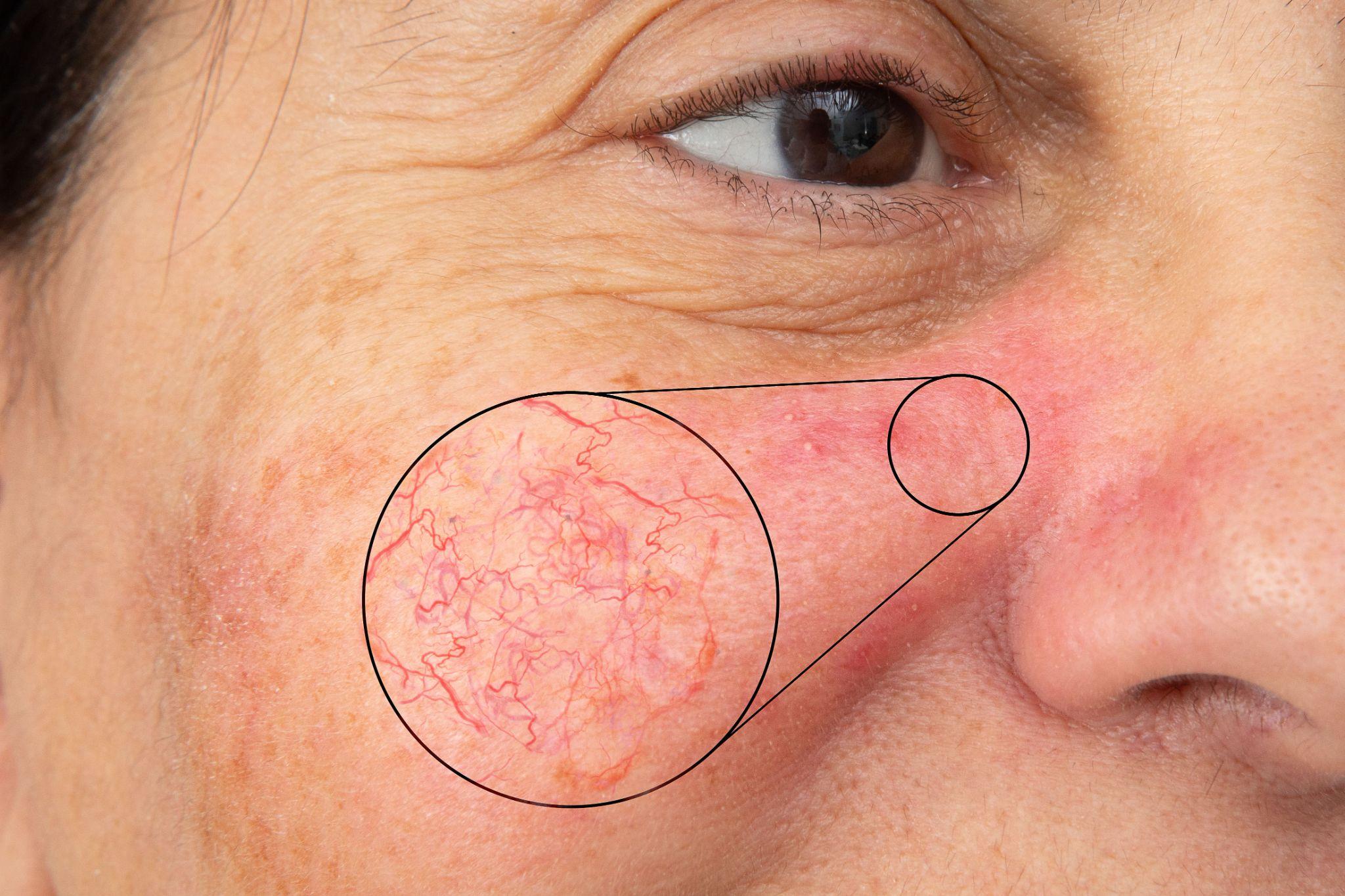
Image by Alessandro_Grandini
The laser treatment process typically involves the following steps:
Consultation with a Dermatologist or Specialist
Before undergoing any laser treatment for rosacea, the first step is to consult a dermatologist or licensed practitioner. During this consultation, the specialist will assess your skin condition, discuss your rosacea symptoms, and recommend the most appropriate laser treatment based on your needs.
Your medical history will also be reviewed, and the dermatologist will ensure that rosacea laser therapy suits your skin type and overall health. If you have any concerns or questions, this is the perfect time to ask.
Pre-Treatment Preparation
On the day of your laser treatment for rosacea, there are a few steps you should follow to prepare:
- Clean the Skin: Your skin will be thoroughly cleaned to remove any makeup, oils, or debris. This ensures the laser can target your skin without any interference.
- Topical Anesthetic (If Necessary): Depending on the type of laser treatment for rosacea, a topical numbing cream may be applied to the treatment area to minimize discomfort. This step is essential for more invasive lasers, such as Fractional CO2 lasers, which can be more intense.
- Eye Protection: Protective eyewear will be provided to shield your eyes from the light emitted by the laser. This is essential for your safety, as lasers can harm the eyes.
The Laser Treatment for Rosacea Process
The laser treatment for rosacea typically lasts 15 to 45 minutes, depending on the area being treated and the type of laser used. Here’s what happens during the procedure:
- Targeting the Blood Vessels: For lasers like Pulsed Dye Laser (PDL) or Nd:YAG, the laser energy is directed at the blood vessels beneath your skin. The energy from the laser is absorbed by the hemoglobin in the blood, which heats the blood vessels, causing them to thicken and eventually collapse. Over time, these blood vessels are reabsorbed by the body, reducing redness and visible veins.
- Reducing Inflammation: Many lasers used for rosacea treatment, such as IPL, also help reduce inflammation in the skin. The light energy penetrates the skin, targeting the inflammation-causing cells, which helps calm the skin and prevent future flare-ups.
- Multiple Passes: Depending on the severity of your rosacea, the practitioner may make several passes over the treated area to ensure thorough coverage and achieve optimal results.
Post-Treatment Care
After the laser treatment for rosacea, your dermatologist will provide instructions on caring for your skin as it heals. This could include guidance about:
- Avoiding Sun Exposure: Protect your skin from direct sun exposure for at least a week after the treatment. UV rays can irritate the skin and cause pigmentation changes, so wearing sunscreen is crucial.
- Moisturizing: Your skin may feel dry or tight after treatment, so it’s essential to keep it hydrated. Use gentle, non-irritating moisturizers as recommended by your dermatologist.
- Avoiding Scrubbing or Exfoliating: After treatment, avoid scrubbing, exfoliating, or using harsh skincare products on the treated area. This can irritate the skin and slow down the healing process.
- Application of Cold Compress: If you experience swelling or discomfort, applying a cold compress to the treated area can help reduce inflammation and ease pain.
Results and Follow-Up Sessions after Laser Treatment for Rosacea
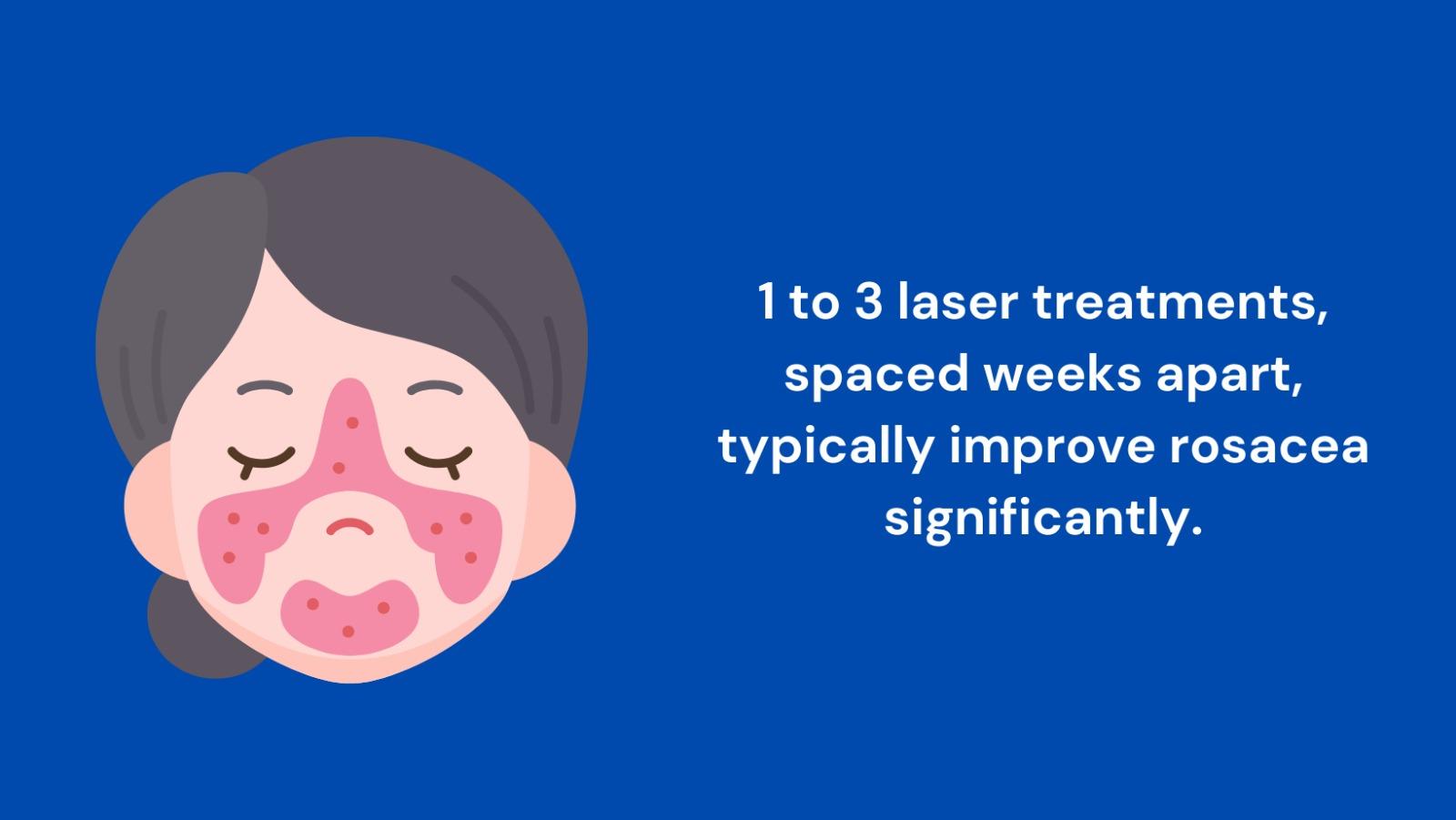
Source: aad.org
- Immediate Results: Some patients may start to see a reduction in redness and visible blood vessels almost immediately after laser treatment for rosacea. However, optimal results will develop over time as the body naturally reabsorbs the blood vessels.
- Multiple Sessions: Depending on the severity of your rosacea, you may need several laser treatments spaced a few weeks apart to achieve the best results. Most patients notice a significant improvement after 1 to 3 sessions.
- Long-Term Maintenance: While laser treatments can provide long-lasting results, rosacea is a chronic condition, and some patients may need maintenance treatments every 6 to 12 months to keep symptoms at bay.
What is the Cost of Laser Treatment for Rosacea

Image by Alessandro_Grandini
The cost of laser treatment for rosacea can vary depending on several factors, including the type of laser used, the location of the treatment, and the number of sessions required. On average, patients can expect to pay:
- Per session: $200 to $500
- Total cost (for multiple sessions, typically 3-5 treatments): $600 to $2,500
Some clinics may offer package deals or discounted rates for multiple treatments, which can reduce the overall cost. Additionally, insurance usually doesn’t cover the cost of rosacea laser treatment since it’s considered a cosmetic procedure, but it’s always worth checking with your provider.
Additional Factors Influencing Cost for Laser Treatment for Rosacea:
- Location: Clinics in metropolitan areas or larger cities charge higher prices than those in smaller towns or rural areas.
- Practitioner’s Expertise: Highly experienced dermatologists or specialists may charge more.
- Clinic Reputation: Established clinics with high-end technology and a strong reputation may have higher costs.
Before undergoing treatment, it’s essential to consult with your dermatologist to get an accurate cost estimate based on your individual needs and the number of treatments required.
Are There Risks to Using Laser Treatment For Rosacea?
While laser treatment for rosacea is generally safe and effective, it comes with some risks, as with any medical procedure. The risks are typically mild and temporary, but awareness of potential side effects is essential. Here are the main risks to consider when going for laser treatment for rosacea:
- Skin Irritation: After laser treatment for rosacea, it’s common to experience some redness, swelling, or a mild burning sensation. These symptoms usually subside within a few hours to a day, depending on the type of laser used. Redness and swelling may last longer for more invasive lasers like Fractional CO2, but this typically resolves within a week.
- Hyperpigmentation or Hypopigmentation: In rare cases, some patients may experience changes in skin pigmentation, such as dark spots (hyperpigmentation) or light spots (hypopigmentation) after laser treatment. This risk is higher in individuals with darker skin tones. Using sunscreen and following aftercare instructions can help minimize this risk.
- Blistering or Scabbing: In rare cases, especially with more aggressive lasers like Fractional CO2, blisters or scabbing may occur. This is usually a result of overtreatment or improper aftercare. Following your dermatologist’s guidelines for proper post-laser treatment for rosacea care is essential to avoid complications.
- Burns or Scarring: While uncommon, there is a small risk of burns or scarring if the laser is not applied correctly. An experienced dermatologist specializing in rosacea laser treatments can significantly reduce this risk.
- Infection: There is a slight chance of infection if the skin is not adequately cared for after treatment. This is more common when patients don’t follow aftercare instructions, such as avoiding sun exposure or applying harsh skincare products too soon after treatment.
Minimizing Risks:
- Choose a Qualified Professional: Ensure the practitioner is highly trained and experienced with the specific laser used for your rosacea treatment.
- Follow Pre- and Post-Treatment Care: Adhering to your dermatologist’s instructions, including applying sunscreen and avoiding certain skincare products, can help reduce the risk of side effects.
- Discuss Skin Type and Concerns: Discuss this with your dermatologist if you have sensitive or darker skin tone. They may adjust the laser settings or recommend a gentler treatment option to minimize risks.
In most cases, the benefits of laser treatments far outweigh the risks. However, before proceeding with laser treatment for rosacea, it is crucial to choose a reputable practitioner and understand the potential side effects.
How Long Do Results From Lasers and Lights Last?
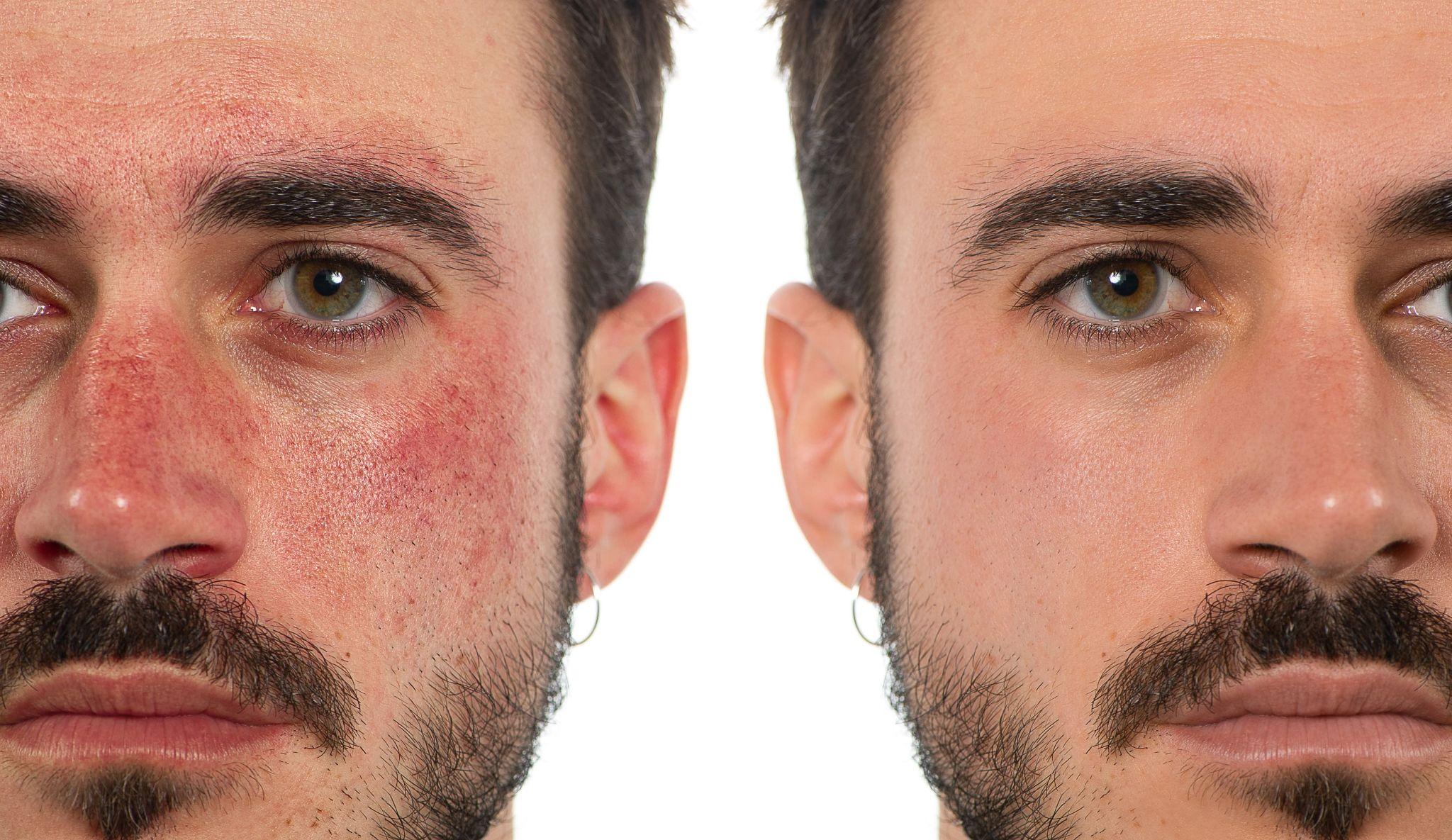
Image by Alessandro_Grandini
Results from laser and light treatments can last anywhere from a few months to a year. The duration depends on the type of treatment, the severity of your rosacea, and how well you care for your skin post-treatment. Maintenance treatments may be needed to keep your symptoms under control.
Is Laser Treatment for Rosacea Painful?
Laser treatment for rosacea is generally well-tolerated, with most patients experiencing only mild discomfort. A cooling gel or numbing cream is often used to minimize pain during the procedure.
Can I Wear Makeup After Laser Treatment for Rosacea?
You should avoid makeup immediately after the laser treatment for rosacea to allow your skin to heal. Most dermatologists suggest waiting 24-48 hours before applying makeup.

